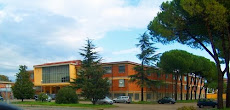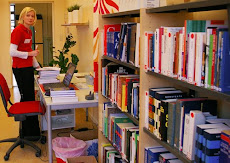
Edra was born in 1987, in Ponsacco, a village 5 km from Pontedera, and quickly became the company of reference of the made in Italy design.The development of Edra is based on quality, innovation and functionality of its products.
A design oriented course, led by the art director Massimo Morozzi, a well-known exponent of the radical movement, who gave recognition and consistency to the collections.
A multicultural approach, sensitive to the language of art, fashion and costume, took Edra to produce signal pieces, which have become icons of contemporary design.
With its highly flexible structure, Edra skillfully uses its expertise to develop innovative products, revolutionizing, in some cases, the classic production of sofas and armchairs. The choice of "glamour" and high quality enhances the value of each product, without falling into decorative redundancy.
Diamond collectionIn 2001 Edra presented Diamond sofa, a Flap sofa studded with Swarovski crystals. In order to make this sinuous sofa with mobile parts sparkling, more than 750.000 crystals were used. Thanks to the co-operation with the Austrian company, first producer in the world of ground crystal, Edra was the first company to let design speak the language of luxury, giving the sparking crystal sensual charm to a piece having innovatory characteristics and special comfort. In 2005 the co-operation with Swarovski went on. Some more crystallised items joined Diamond sofa. A special Diamond collection was born: Damier, Getsuen, Tatlin, Sushi and On The Rocks shine with thousands of crystals. For getting this magic, a special high resistant fabric containing Kevlar is cut and then Swarovski covers it with crystals. Swarovski set up the decoration constituted by small crystals prearranged by Hot Fix technology, patented for hot application on fabric. A special glue sensitive to high temperature fixes the self-adhesive crystals on the fabric permanently, granting their adherence for ages. Shining of crystals, the fabric is sewed on the products by the skilful hands of Edra couture dept. Each crystallized piece has a special metallic numbered tag, where both company brands are stamped on, Edra and Swarovski: not only an authenticity guarantee, but also a sign of this special association that makes design a desire object.
 Tatlin
TatlinLoosely based on the Tatlin tower (a wooden model of which is on display at Beaubourg in Paris), this spiral sofa is a centerpiece for living rooms and public areas, a new form of seating. Its plywood base has metal feet and the spiral, a true work of engineering, is in moulded and wrought steel. The filling is in flexible and breathable polyurethane foam and the upholstery in velvet or on request other fabrics and leather from the fabric collection.
 Corbeille
CorbeilleIt is an invitingly soft armchair, a warm nest to curl up in. The ultimate in relaxation! Its basket-shaped woven metal structure is filled with soft, informal, loosely covered cushions. The juxtaposition of fabric and leather highlights the contrast between rigid frame and soft, sensual upholstery.
 Rose chair
Rose chairRose-shaped, it can be seen as a haute couture item. The petals, which form the padding and make the seat welcoming, are hand made one by one. The frame is in moulded metal with small parts in shaped wood. The filling is in polyurethane foam and Dacron and the legs are in turned and brushed aluminum with a kiln-dried transparent finish coating. The upholstery is in velvet in the colours available in the fabric collection.
 Chantilly
ChantillyThe name speaks volumes. Like its creamy edible counterpart, Chantilly has two components: a soft, flowing exterior sustained by rigid inner frame that rises to a flat leather-clad top. The satin upholstery is deliberately loose fitting. It flounces and cascades, soft and inviting, its folds highlighting the fabric's sheen. The high back oh this circular settee supports the nape of the neck- a cervical cushion reminiscent oh the 19th century models but without their rigidity and severity. Chantilly is the epitome of softness and sensuality, conjuring up a riot of images. Effortless folds and elegant sheen recall gowns by Valentino or Marilyn Monroe. Like lavish fashion, it triggers many a flight of fantasy. Like its name though, Chantilly also evokes the very physical sense of taste that captures perfectly the all-pervading materiality of Sempè's new upholstered creation. Chantilly is the first creation to abandon respectable prêt-a-porter elegance for a stunning evening dress or slinky silk negligee-for comfort's sake, but especially to seduce. Its assertive presence earmarks Chantilly as the centerpiece of any environment.
























